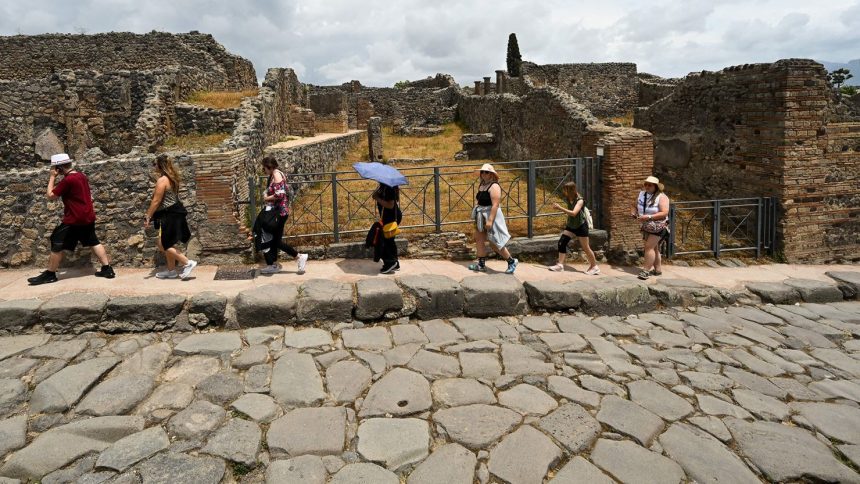CNN
—
Authorities at Pompeii in southern Italy are introducing a daily limit of 20,000 visitors as part of efforts to protect the ancient site.
The measure, which will come into force from November 15, will see the introduction of personalized tickets bearing the name of each visitor, according to a statement from the Pompeii archaeological park published Friday.

In the busier summer period, which runs from April 1 to October 31, visitors will also be given a designated time slot, adds the statement.
The new process is being introduced after a record-breaking summer season during which more than 4 million people visited the site, near the city of Naples, with more than 36,000 visitors on the busiest day.
“We are working on a series of projects to reduce the anthropic pressure on the site, which can be a risk both for people, for example in the event of an earthquake, and for the heritage, so unique and fragile,” said park director Gabriel Zuchtriegel.

“We are aiming for a slow, sustainable, pleasant and non-mass tourism experience,” he added.
When Mount Vesuvius erupted in 79 AD, the volcano spewed hot, lethal gases and ash into the air, killing most of Pompeii’s inhabitants.
Ash and volcanic rock called pumice then covered the city and its residents, preserving scenes of the victims of Pompeii’s destruction like an eerie time capsule.
The site has long been a popular tourist attraction, but the sheer weight of numbers has caused increasing problems at the site as visitor numbers rose from under 2.7 million in 2014 to more than 3.9 million by 2019.
In response, authorities alighted on a potential solution: dispersing visitors around ancient sites that are further afield, with all-in-one tickets and shuttles laid on between the sites.
“Grande Pompei,” as the project is called, is a “parco diffuso” or scattered archaeological park, incorporating the archaeological area of Pompeii itself, as well as villas at nearby Boscoreale, Oplontis (in the modern town of Torre Annunziata) and Stabiae, at modern Castellammare di Stabia.



